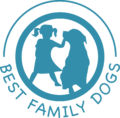Keeshond Stats!
Group: non-sporting
Hieght: 17 inches (43 cm) to 18 inches (46 cm) tall to shoulder
Weight: 30 pounds (14 kg) to 40 pounds (18 kg)
Life Span: 13 – 15 years
How a Keeshond Will Add Joy To Your Family
The Keeshond is a medium sized breed that originated in Europe. The dog was bred for companionship. The breed is also known as Keeshonden, and they are very playful. These dogs are known for their intelligence and energy.
They are quick learners, but can also develop bad habits out of boredom. However, the Keeshond is very eager to please and with the right fit, both the dog and the family should enjoy each other.
The keeshond is quick, and agile with amazing jumping ability. They are excellent agility and obedience dogs, taking them to classes as a form of exercise is a great way to prevent mischief behavior, by providing adequate mental and physical stimulation.
Keeshonds love children and their family, and long to spend time with their human pack. This dog does not do well with long periods of separation from human contact. These dogs generally like other dogs and enjoy dog-dog play as well as human-dog play. At times Keeshonds can bark, because they are very alert and aware, as a demonstration of their loyalty.
Their training needs to be consistent to prevent nuisance barking, although they are not aggressive dogs. They often make great companions for children. They have often been referred to as “their owner’s shadow” and “Velcro dogs”, because of how close they like to be to their human pack.
Their coat is long and fluffy and should not be shaved. Their coat protects the dog from the weather and insects, but does not require frequent bathing. Although some sources suggest that adequate grooming can be done for one hour a week, I suggest a few minutes a day is better for the owner’s time and the dog’s enjoyment and attention span. As well as the overall look of the coat.
Keeshond Breed Origin
The Keeshond is believed to be a decedent of the “Wolf Spitz” or “German Spitz”. The dog originated in the Netherlands and Germany around the 18th century. Keeshonds were used on the river boats and barges as watch dogs, and as travel companions.
The Keeshond was named after the Dutch Patriot, Cornelis “Kees” de Gyselaer the leader of the political rebellion against the House of Orange. The dog became a symbol for the rebels. “Hond” is the Dutch word for “dog”, therefore the name “keeshond” was formed.
When the House of Orange was restored to power, people were reluctant to identify with the rebels and the Keeshond breed diminished in popularity almost to the point of extinction during the late 19th century. The American Kennel Club initially refused to recognize the breed for what it represented. However, there remained only a few independent breeders who continued to breed the Keeshond.
By the 1920’s, Baronesse van Hardenbroek is credited with preventing the breed’s extinction. In 1924, the Nederlandse Keeshond Club was formed. Over the next decade, the breed found its way to New York.
The Keeshond was finally accepted into the American Kennel club in 1930; despite the breeds near extinction resulting from the House of Orange rebellion and the breeds diminished reputation after World War I. Today, the Keeshond continues to thrive.

Keeshond Health
Of course most Keeshonds will be born healthy and live long happy lives. However, like all breeds Keeshonds are still susceptible to some medical aliments.
- Hip dysplasia
- Luxating patella (sliding knee joint),
- Epilepsy (seizure disorder),
- Cushing’s Syndrome (increased cortisol or “stress” hormone levels)
- Hyperparathyroidism (Increase parathyroid hormone production)
- Hypothyroidism (Decreased production of thyroid hormone)
- Von Willebrand’s Disease (Hereditary blood clotting disorder)
These health problems can also affect other breeds of dogs as well. It is important to realize that not all Keeshonds will have health issues. The health risks I have listed are treatable with medication or surgery. Von Willebrand’s Disease only requires medical intervention in cases of prolonged bleeding. Otherwise your dog will live a normal life regardless of the chronic condition of Von Willebrand’s Disease.
Keeshond Loves Family
The Keeshond breed wants to be accepted by a loving family pack. This is a gentle, docile dog when trained consistently. This breed will made a great playmate for young children. Older children can have more accountability with care of the Keeshond, and still get the companionship a Keeshond offers. Keeshond’s do best in a family home with space to play and roam outside, as oppose to an apartment. Their exercise need is moderate, their grooming care is also moderate.
Would You Get a Keeshond?


